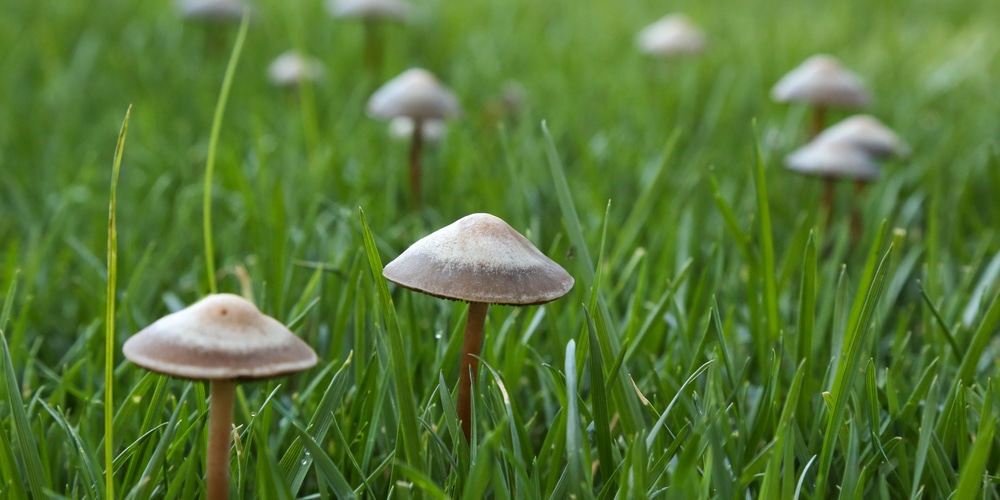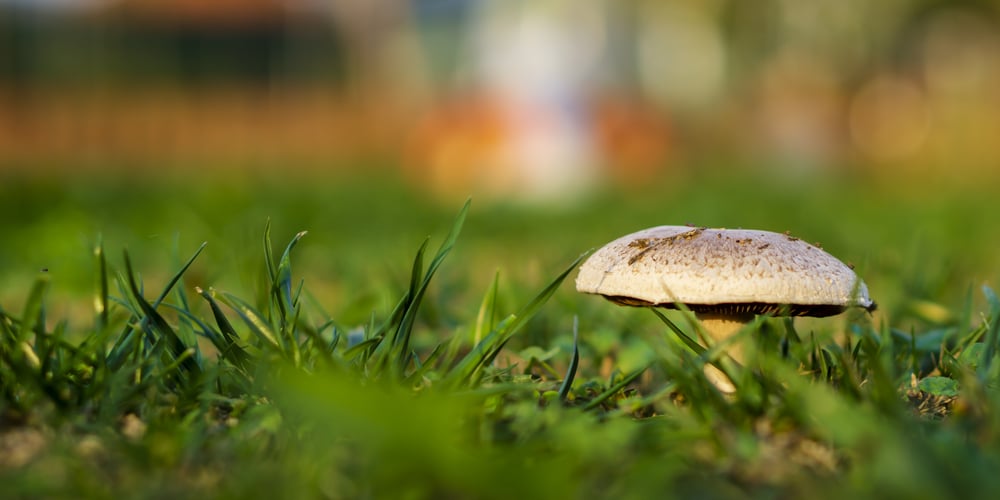Laying sods is a great way to quickly achieve a beautiful, luscious lawn. Sods are cut from already existing grassy areas and then transplanted to your yard. It is an excellent alternative to growing grass from seed. Oftentimes, it is also used in golf courses, public parks, and other high-traffic areas to replace grass areas that have been damaged.
However, there is one downside to new sods – mushrooms. Many people have reported seeing new mushrooms sprouting up in their yards after laying sods. While mushrooms are not harmful to your grass, they can be unsightly and cause concern for new sod owners.
Mushrooms New Sod: Is it Normal To Appear?
So, why do mushrooms appear after new sods are laid? Whether you’re dealing with store-bought or custom-grown sods, the probability of encountering mushrooms is the same.
However, mushrooms appearing in your new sod is actually quite normal and nothing to be worried about. When you first get your sod, it’s most likely attached to a layer of thatch.
This thatch is made up of organic matter, such as dead leaves, stems, and grass. Technically, this helps the sod stay “knitted” together and provides some protection against heat and drought.
However, the thatch also provides an ideal environment for mushrooms to grow. As the thatch decomposes, it provides food and shelter for fungi spores. The thatch is moist and shady – two things that mushrooms love. So, when you lay your new sod, you’re essentially giving the mushrooms the perfect conditions to thrive.
Fungus in your soil helps to decompose thatch and other organic matter. This is a good thing! The fungi help recycle nutrients back into the soil, benefiting your grass. As organic matter is broken down, your grass will be able to access more nutrients and moisture, leading to a healthier lawn.
While mushrooms appearing in your new sod may be unsightly, they are actually a sign of a healthy lawn. The key is to not disturb the thatch too much. Raking or removing the thatch can damage the delicate root system of your grass and make it more susceptible to
Getting Rid of Mushrooms in New Sod
The good news is that the mushrooms won’t harm your new sod, at least just yet. In fact, it’s a good indicator that your newly laid sod is decomposing properly. Additionally, these mushrooms are only temporary and will eventually disappear on their own.
Mushrooms are growing because you’re keeping your soil wet for your grass to take root. Once your grass is established, and as soon as you minimize your watering frequency, the mushrooms will start to disappear. If you’re still seeing them after your grass is fully rooted, you can try several methods to get rid of them.
1) Mow it Off
If you’ve already started mowing your lawn, simply mow over the mushrooms. The blades of your lawn mower will chop up the mushrooms and spread them around, eventually causing them to disappear.
Just be sure to clean your mower afterward! Spores can attach to the blades and spread to other areas of your lawn, leading to more mushroom growth.
2) Hand Pick the Mushrooms
This method is best for small patches of mushrooms. If you have a few mushrooms here and there, simply pull them out by hand. Wear gloves and dispose of the mushrooms in a plastic bag.
Remember, while we discourage removing these mushrooms for a newly laid sod, you can still do so if they’re causing you too much anxiety.
3) Reduce Watering Frequency
You’ll eventually have to reduce the watering frequency once your grass is established. As soon as the soil has time to dry out, the mushrooms will start to disappear. Reducing watering frequency can be a gradual process.
Start by watering every other day and then gradually increase the number of days in between waterings. Once you’re only watering once a week, the mushrooms should be gone.
Final Thoughts
While it may be unsightly, finding mushrooms in new sod is actually a good sign. The mushrooms indicate a healthy lawn and will eventually disappear on their own. If you’re looking to get rid of them sooner, try mowing them over or reducing your watering frequency.
Related Article: Brown Mushroom Growing in a Potted Plant

